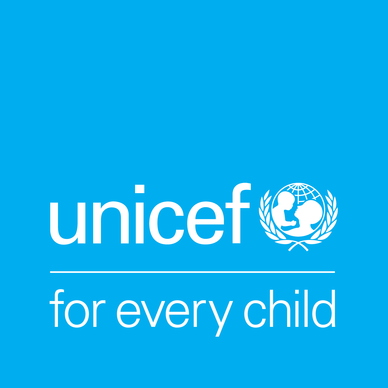Alarming 46 per cent rise in children diagnosed with malnutrition across Darfur underscores urgent need for access and aid across conflict-affected region
PORT SUDAN, 11 July 2025 – Alarming new data from UNICEF reveals a 46 per cent surge in the number of children being treated for severe acute malnutrition (SAM) across Sudan’s five Darfur states between January and May 2025, compared to the same period in 2024. In North Darfur alone, more than 40,000 children were admitted for treatment for SAM in the first five months of the year – double the number for the same period last year.
The most recent surveys* across five areas in Darfur (April–May 2025) reveal a deeply alarming increase in child malnutrition. In 9 out of 13 localities, the rate of acute malnutrition has surpassed emergency levels set by the World Health Organization. In Yasin locality in East Darfur, the survey conducted at the onset of the lean season in May shows a global acute malnutrition (GAM) rate – consisting of severe and moderate acute malnutrition – reaching 28 per cent. If that number rises to 30 per cent, it will meet one of three critical thresholds used to determine a famine. This data signals an escalating catastrophe for children unless urgent action is taken, in a country where famine is already occurring in several areas.
“Children in Darfur are being starved by conflict and cut off from the very aid that could save them,” said Sheldon Yett, UNICEF Representative for Sudan. “Even before the lean season fully takes hold, these numbers are dangerously high and will likely worsen without swift humanitarian action. This is a moment of truth; children’s lives depend on whether the world chooses to act or look away.”
The situation is equally alarming in other parts of the country. SAM admissions rose by more than 70 per cent in North Kordofan, by 174 per cent in Khartoum State, and by a staggering 683 per cent in Al Jazirah State. In Al Jazirah, and Khartoum, the increase in admission rates likely partially reflects an improvement in security and humanitarian access, improving the ability of mothers to reach health centres for support.
With Sudan now in the peak of the lean season, the risk of mass child mortality is growing rapidly in areas already near famine thresholds. Cholera outbreaks, measles cases, and collapsing health services are compounding the crisis, putting vulnerable children at greater risk.
SAM, also known as severe wasting, is the most lethal form of malnutrition. Children with SAM are extremely vulnerable to life-threatening complications and have a high mortality rate if given inadequate or inappropriate care. They require immediate, intensive treatment.
Since April, conflict in North Darfur – particularly around Al Fasher and Zamzam camp – has intensified. Entire neighbourhoods have been besieged, hospitals bombed, and roads blocked. Aid convoys face looting and attacks. Humanitarian access is now almost entirely cut off.
UNICEF managed to deliver a batch of supplies to Al Fasher early this year but attempts to send more have been thwarted by insecurity. Supplies of ready-to-use therapeutic food (RUTF) in Al Fasher are now exhausted. Health facilities in and around Zamzam have shut down, while water shortages and poor sanitation raise the threat of cholera and other deadly diseases continuing to spread.
The crisis is displacing hundreds of thousands. In April alone, nearly 400,000 people fled Zamzam, with many walking up to 70 km to reach Tawila. In Tawila, over 500,000 displaced people now crowd into public buildings or sleep in the open, with limited food, water or shelter.
UNICEF and partners are doing everything possible to save lives – from treating the wounded and malnourished, to drilling wells and distributing food – but the violence continues to drive new needs faster than they can be met.
UNICEF is urgently calling on:
- All parties to facilitate rapid, safe, and unimpeded humanitarian access to affected populations in Darfur and the Kordofans.
- The international community to fully fund the humanitarian response and ensure uninterrupted supply chains for therapeutic food and medical supplies.
- Renewed diplomatic pressure on all parties for a cessation of hostilities to allow lifesaving assistance to reach children.
UNICEF requires an additional US$ 200 million this year to sustain and expand essential nutrition services, including treatment for severe acute malnutrition and delivery of therapeutic food.
#####
Notes for editors:
* The Standardized Monitoring and Assessment of Relief and Transitions surveys (known as SMART surveys) are a method for assessing the nutritional status of a population, particularly in emergency contexts.
UNICEF Snapshot Report on North Darfur available here: https://www.unicef.org/sudan/reports/humanitarian-snapshot-children-under-siege-north-darfur
Multimedia materials available here: https://weshare.unicef.org/Share/a3822tdj05102t5m6sih4k3we2326j17
NEW: Subscribe to UNICEF’s global media updates on WhatsApp.
For more information, please contact the UNICEF UK media team on 0207 375 6030 [email protected]
About UNICEF
UNICEF works in some of the world’s toughest places, to reach the world’s most disadvantaged children. Across more than 190 countries and territories, we work for every child, everywhere, to build a better world for everyone.
The UK Committee for UNICEF (UNICEF UK) raises funds for UNICEF’s emergency and development work for children. We also promote and protect children’s rights in the UK and internationally. We are a UK charity, entirely funded by supporters.
United Kingdom Committee for UNICEF (UNICEF UK), Registered Charity No. 1072612 (England & Wales), SC043677 (Scotland).
For more information visit unicef.org.uk. Follow UNICEF UK on Twitter, LinkedIn, Facebook and YouTube.


